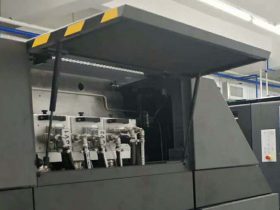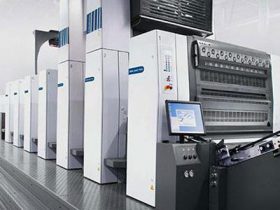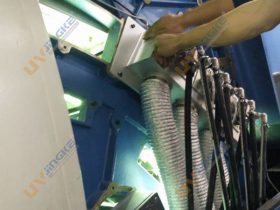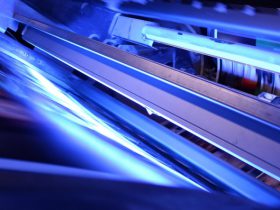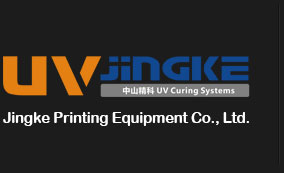UV lamps
The heart of a UV discharge lamp is the silica tube with fused-in electrodes on both ends. When the lamp ignites, the high voltage arc generates a plasma between the electrodes. This Plasma emitts the typical UV spectrum of a medium pressure lamp.
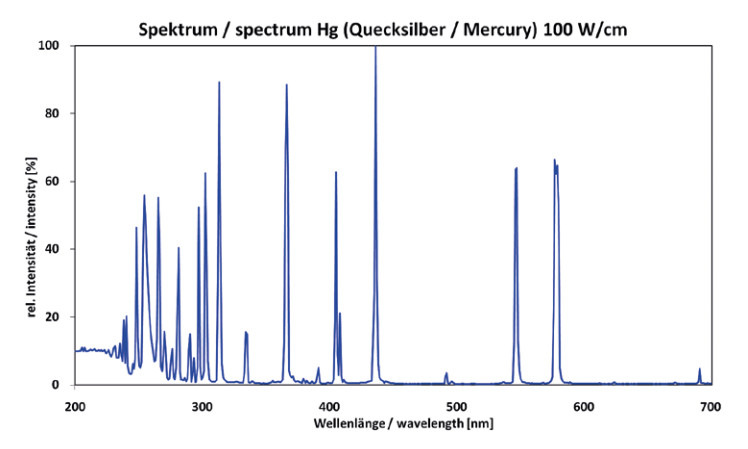
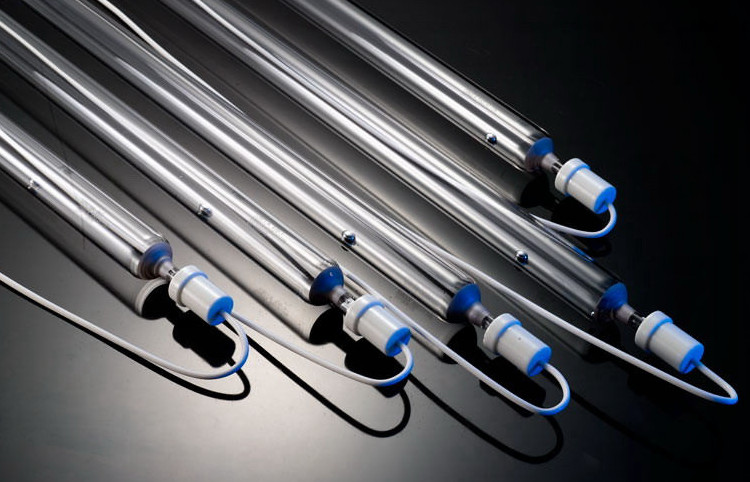
By adding different dopings to the mercury, e.g. iron or gallium, the wavelength can be shifted into a longer-wave range within the respective spectrum. Due to the chemistry the curing parameters can be optimized by the use of a doped spectrum.
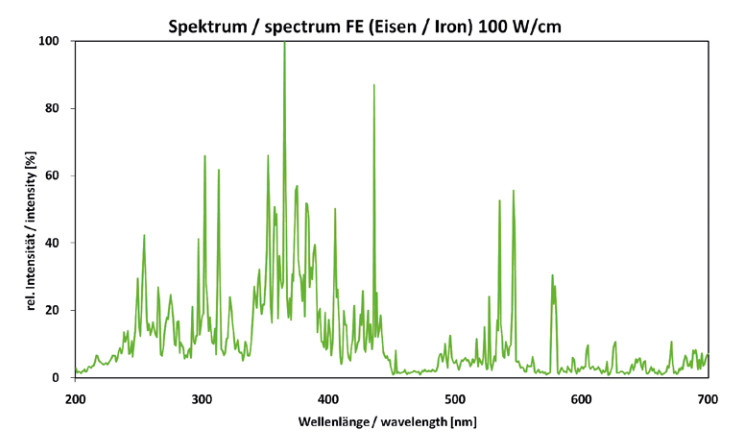
LEC
As one popular example “Low Energy Curing” has to be mentioned: a curing application for sheetfed offset presses which is based on using high reactive UV inks. A suitable adjustment between inks and iron doped UV radiators allows printers to proft from fastest throughput times and a signifcant reduction of energy consumption.
UV-LED
Compared to conventional discharge lamps UV-LEDs do not produce a broad UV spectrum, but a narrow band with specifc emission peak. Furthermore LEDs do not emit IR irradiation.
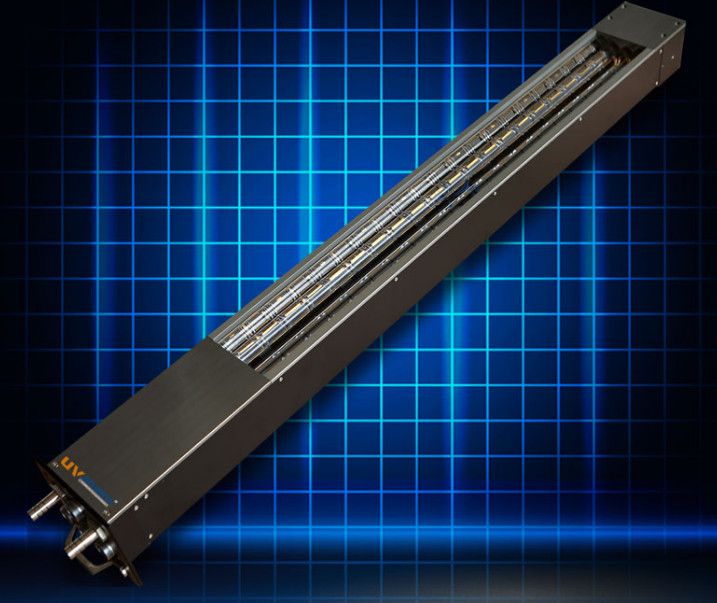
When using LEDs even temperature-sensitive materials can be irradiated, as only marginal heat affects the substrate. The different spectra ensure safe and fast curing.
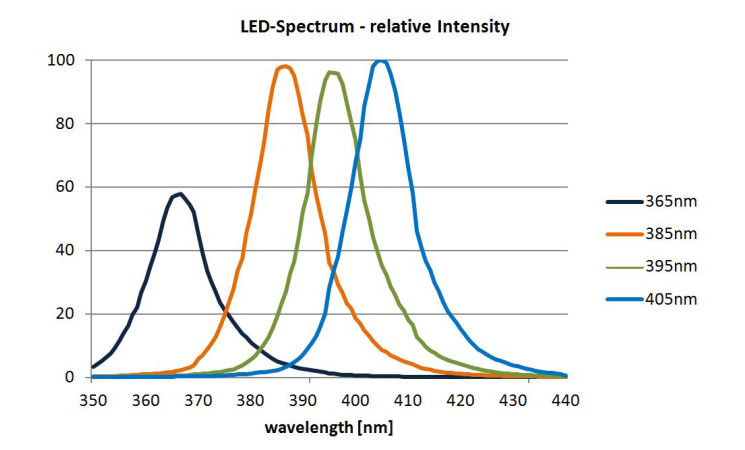
LEDs are characterized by a very long life cycle. Typical application felds for LED curing are in the bonding, potting and digital printing industries.
